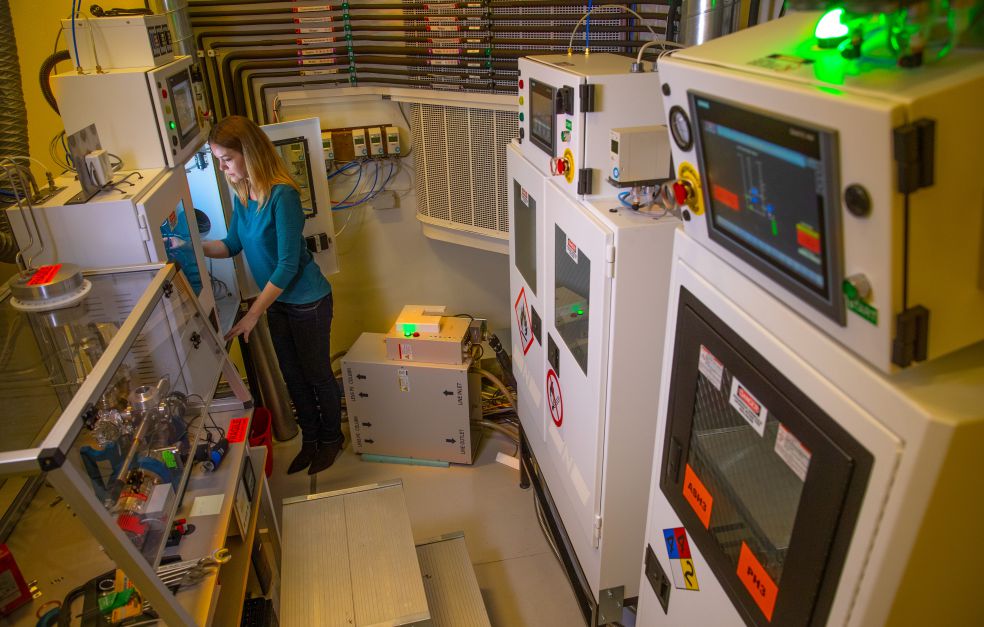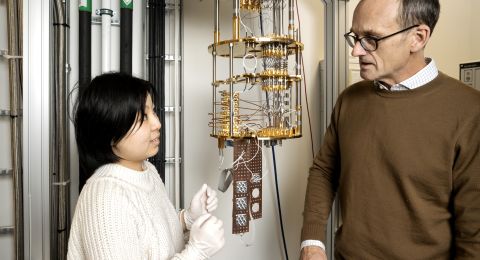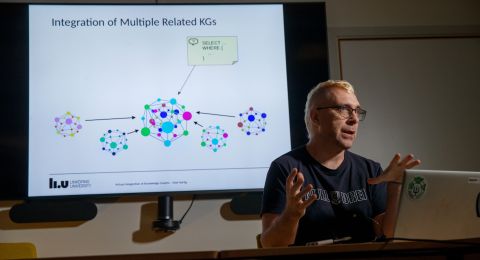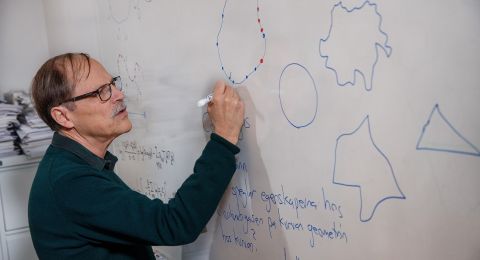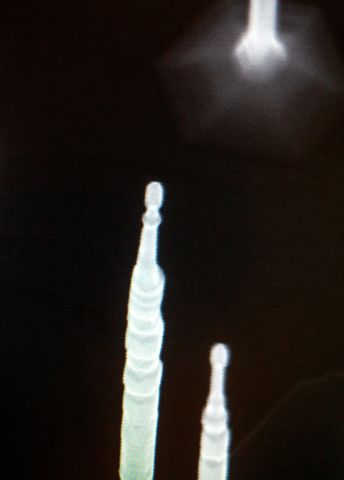
Project Grant 2017
Controlled atomic scale 3D ordering for exotic electronic phases
Principal investigator:
Kimberly Dick Thelander, Professor of Materials Science
Co-investigators:
Ferdi Aryasetiawan
Anders Gustafsson
Sebastian Lehmann
Martin Leijnse
Anders Mikkelsen
Mats-Erik Pistol
Claes Thelander
Rainer Timm
Institution:
Lund University
Grant in SEK:
SEK 34.2 million over five years
Development of new materials is central to technological developments as a whole. This applies not least to crystals made of semiconducting materials used in electronics. The composition and shape of the crystals are controlled, which enables the researchers to control their properties. Over time it has become possible to create smaller and smaller crystals. But they are now so small that variations in the placement of individual atoms have become important. Random variations can cause problems, since they impact the material’s properties, but they can also create wholly new opportunities.
At Lund University, Professor Kimberly Dick Thelander and her colleagues have developed a method of controlling exactly how atoms are placed in semiconducting crystals. She is heading a project funded by the Knut and Alice Wallenberg Foundation, in which she and her team are creating new materials by varying the placement of atoms, and studying the resulting electronic properties.
“It is not only possible; it is actually likely that we will discover something quite unexpected. Everything we are studying inhabits the realms of the unknown, and we can’t guess the practical effects of different phenomena. As a whole, matter is more surprising than many people imagine,” says Dick Thelander.
Nanowire base for controlled crystals
The researchers create semiconducting nanowires out of different combinations of materials. The wires are incredibly thin, often only a few hundred atoms wide. Under the right conditions, the wires build themselves. They then serve as a template for atoms that form into crystals on the surfaces of the wires. Since the nanowires are identical, the crystals form in the same way on each wire. Several billion wires can be formed on a single chip in the laboratory, and the crystals can be created by new combinations of materials, never before studied.
Dick Thelander’s own contribution to the project lies in the structure of the nanowires, in understanding how the atoms are bound together when the wires form. She wants to know more about what controls the emerging pattern, and how it can be influenced. The other researchers in the project are concentrating mainly on the new electronic properties that arise in the materials.
One part of the project involves studying the nanowires and crystals at extremely low temperatures, and under X-ray and laser bombardment. When the scale is very small and conditions extreme, matter can suddenly behave quite differently. One example is that of superconductors, through which electric current can pass without any resistance at all.
The Lund researchers will also be creating excitons in the new materials. These are pairs of particles, one of which is an electron, and the other an “electron hole”. Since the electron is negatively charged, and the hole positively charged, they are attracted to one another. If they meet, they will both be obliterated, but if they can be kept apart, the pairs acquire interesting and unusual properties. Martin Leijnse, one of the researchers on the project, explains:
“Excitons can form new states – they can become superfluidic, for example. This means they behave like a fluid with zero viscosity.”
He describes how the project will also study topological states, a concept whose theoretical basis was awarded the Nobel Prize in Physics in 2016. Only in recent years has it been possible to demonstrate these states by practical experiments, and in Vationer som inte existerar än dch sLund the researchers want to create them in nanowires. Gaining a better understanding of these phenomena is a step toward creating the quantum computers of the future, and extremely energy-efficient electronics, for example.
Exotic materials – but real
The project is a collaboration between nine researchers at Lund University who are experts in different fields. At Lund they have access to several advanced instruments, including the MAX IV facility, in which samples can be bombarded with synchrotron light, and a new electron microscope in which the crystals can be built. This will enable the research team to study them while they are taking shape, atom by atom.
And the strength of the project lies in precisely this strategic combination of expertise and instruments. Dick Thelander explains:
“The materials we are designing here could be made somewhere else. What is unique is that we have so much expertise and necessary equipment gathered in the same place, and can use it efficiently.”
Although the subject of the project is purely basic research, Dick Thelander envisions that its findings will one day be put to practical use. She notes that the research she and her colleagues are doing “involves a lot of quantum physics”, but points out that this is also true of much of the electronic devices used in society today – equipment that is already largely based on quantum physical phenomena, even if this is not something we think about.
“We intend to take theories and test them in the real world. We are working with exotic, infinitesimally small materials, but they are real, and they could be used in something one day. But first we have to figure out what we want to use them for – after all, we’re talking about applications that don’t exist yet. We’re trying to go beyond everything else that’s currently being done.”
Text Lisa Kirsebom
Translation Maxwell Arding
Photo Magnus Bergström

